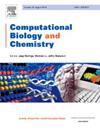A novel prognostic risk score model based on RNA editing level in lower-grade glioma
IF 2.6
4区 生物学
Q2 BIOLOGY
引用次数: 0
Abstract
Background
Lower-grade glioma (LGG) refers to WHO grade 2 and 3 gliomas. Surgery combined with radiotherapy and chemotherapy can significantly improve the prognosis of LGG patients, but tumor progression is still unavoidable. As a form of posttranscriptional regulation, RNA editing (RE) has been reported to be involved in tumorigenesis and progression and has been intensively studied recently.
Methods
Survival data and RE data were subjected to univariate and multivariate Cox regression analysis and lasso regression analysis to establish an RE risk score model. A nomogram combining the risk score and clinicopathological features was built to predict the 1-, 3-, and 5-year survival probability of patients. The relationship among ADAR1, SOD2 and SOAT1 was verified by reverse transcription-quantitative polymerase chain reaction (RT-qPCR)
Results
A risk model associated with RE was constructed and patients were divided into different risk groups based on risk scores. The model demonstrated strong prognostic capability, with the area under the ROC curve (AUC) values of 0.882, 0.938, and 0.947 for 1-, 3-, and 5-year survival predictions, respectively. Through receiver operating characteristic curve (ROC) curves and calibration curves, it was verified that the constructed nomogram had better performance than age, grade, and risk score in predicting patient survival probability. Apart from this functional analysis, the results of correlation analyses between risk differentially expressed genes (RDEGs) and RE help us to understand the underlying mechanism of RE in LGG. ADAR may regulate the expression of SOD2 and SOAT1 through gene editing.
Conclusion
In conclusion, this study establishes a novel and accurate 17-RE model and a nomogram for predicting the survival probability of LGG patients. ADAR may affect the prognosis of glioma patients by influencing gene expression.
基于低级别胶质瘤 RNA 编辑水平的新型预后风险评分模型。
背景:低级别胶质瘤(LGG)是指WHO 2级和3级胶质瘤。手术结合放疗和化疗可显著改善 LGG 患者的预后,但肿瘤进展仍不可避免。据报道,RNA编辑(RE)作为转录后调控的一种形式,参与了肿瘤的发生和发展,最近对此进行了深入研究:方法:对生存数据和 RE 数据进行单变量和多变量 Cox 回归分析以及 lasso 回归分析,以建立 RE 风险评分模型。结合风险评分和临床病理特征,建立了预测患者1年、3年和5年生存概率的提名图。通过反转录-定量聚合酶链反应(RT-qPCR)验证了ADAR1、SOD2和SOAT1之间的关系 结果:建立了与RE相关的风险模型,并根据风险评分将患者分为不同的风险组。该模型显示出很强的预后能力,预测 1 年、3 年和 5 年生存率的 ROC 曲线下面积(AUC)值分别为 0.882、0.938 和 0.947。通过接收者操作特征曲线(ROC)和校准曲线,验证了所构建的提名图在预测患者生存概率方面的性能优于年龄、分级和风险评分。除功能分析外,风险差异表达基因(RDEGs)与RE之间的相关性分析结果也有助于我们了解LGG中RE的内在机制。ADAR可能通过基因编辑调控SOD2和SOAT1的表达:总之,本研究建立了一个新颖、准确的17-RE模型和提名图,用于预测LGG患者的生存概率。ADAR可能通过影响基因表达来影响胶质瘤患者的预后。
本文章由计算机程序翻译,如有差异,请以英文原文为准。
求助全文
约1分钟内获得全文
求助全文
来源期刊

Computational Biology and Chemistry
生物-计算机:跨学科应用
CiteScore
6.10
自引率
3.20%
发文量
142
审稿时长
24 days
期刊介绍:
Computational Biology and Chemistry publishes original research papers and review articles in all areas of computational life sciences. High quality research contributions with a major computational component in the areas of nucleic acid and protein sequence research, molecular evolution, molecular genetics (functional genomics and proteomics), theory and practice of either biology-specific or chemical-biology-specific modeling, and structural biology of nucleic acids and proteins are particularly welcome. Exceptionally high quality research work in bioinformatics, systems biology, ecology, computational pharmacology, metabolism, biomedical engineering, epidemiology, and statistical genetics will also be considered.
Given their inherent uncertainty, protein modeling and molecular docking studies should be thoroughly validated. In the absence of experimental results for validation, the use of molecular dynamics simulations along with detailed free energy calculations, for example, should be used as complementary techniques to support the major conclusions. Submissions of premature modeling exercises without additional biological insights will not be considered.
Review articles will generally be commissioned by the editors and should not be submitted to the journal without explicit invitation. However prospective authors are welcome to send a brief (one to three pages) synopsis, which will be evaluated by the editors.
 求助内容:
求助内容: 应助结果提醒方式:
应助结果提醒方式:


